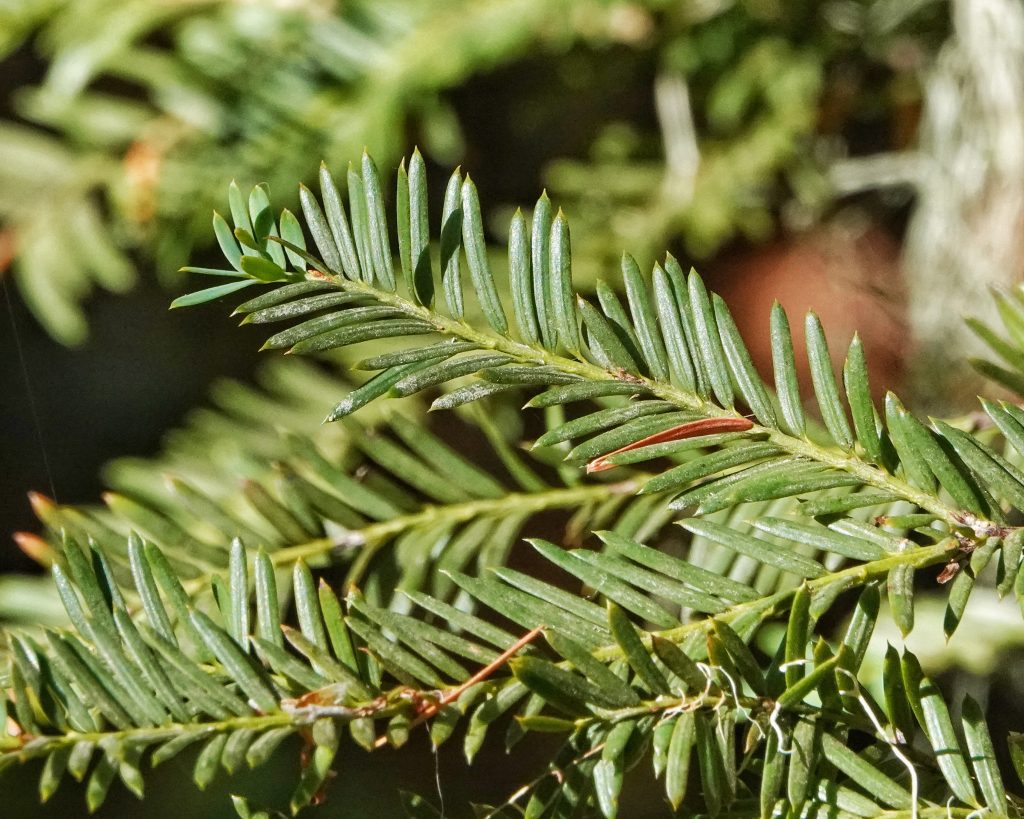
When I decided to learn about the conifers I thought finding a Pacific Yew (also known as western yew) would be problematic, because I didn’t remember ever seeing one, although my friend Craig Sondergaard assures me that he has pointed them out to me before. But it turned out that all I had to do was be aware of conifers to find these very cool trees. In fact all I really had to do was to be looking for Western Hemlocks, with their short needles, to find one on the Burnt Bridge Creek Trail in Vancouver, Washington. Then two days later I found a few more in another urban forest in Vancouver (as well as an introduced yew), all of which caught my eye as ‘an odd looking hemlock’. And finally there were several of them along the Falls Creek Trail in Skamania County, Washington, though this time my first thought (because I’m still in the ‘needles first’ phase of conifer identification) was usually ‘that’s an odd looking Grand Fir’.
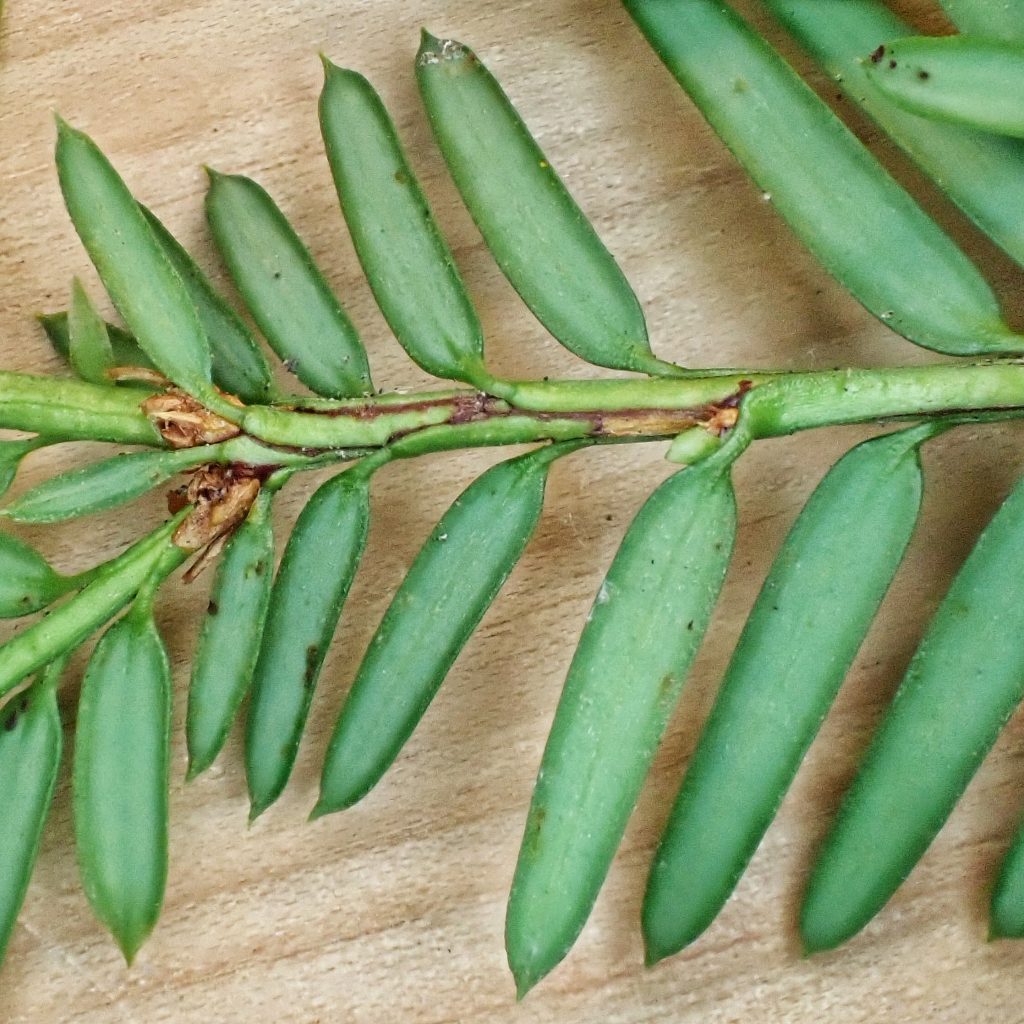
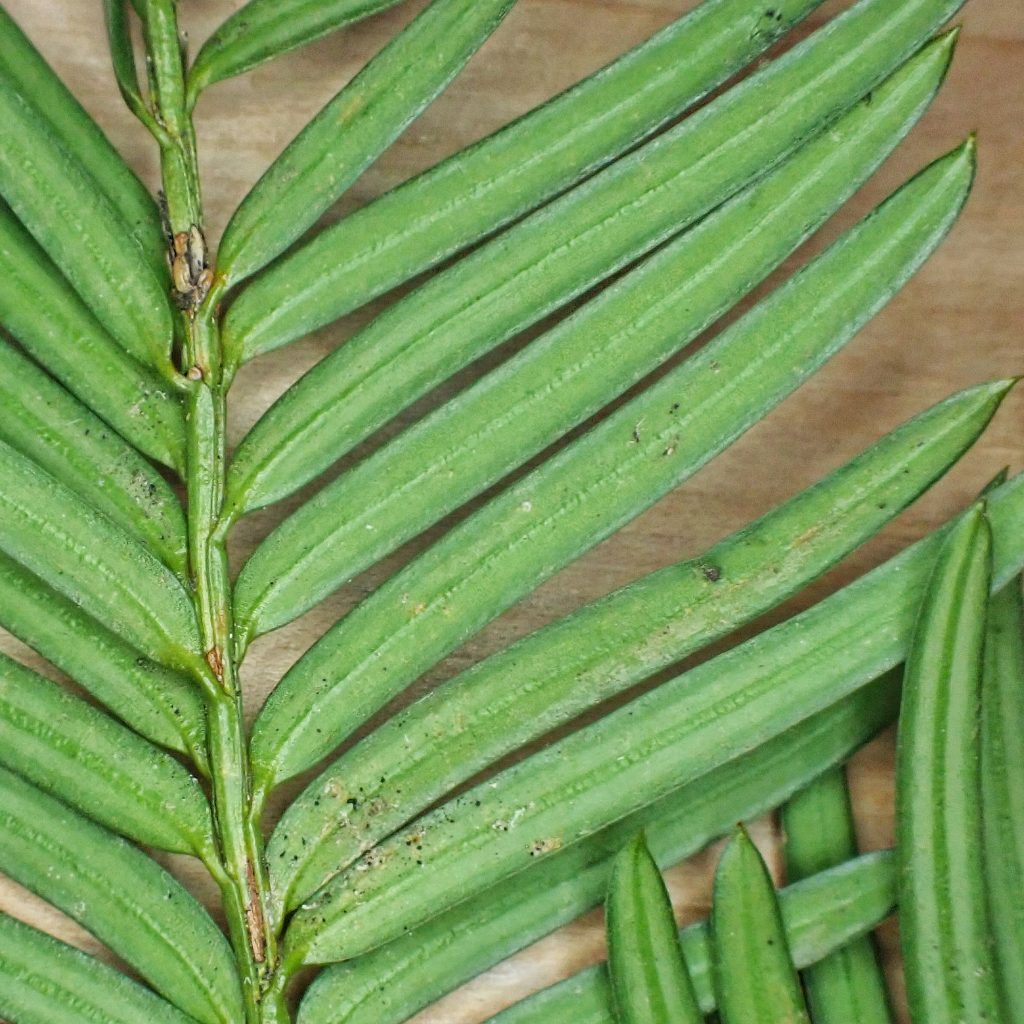
But a closer look immediately rules out other native conifers, because yews have quite distinctive needles that are arrayed in two flat rows, are all roughly the same size, and are apiculate (meaning they narrow abruptly to a fine point), a trait only possessed, among our native conifers, by Redwoods (Sequoia sempervirens), which only grow in sw Oregon/nw California and have twin lines of stomatal bloom on the underside of the needles, while yew needles lack stomatal bloom. Besides also having stomatal bloom on the underside of the needles, the aforementioned Western Hemlock and Grand Fir have different sizes of needles arrayed next to each other, and Western Hemlock has a rounded apex to the needle, while the needles of Grand fir have a blunt or notched apex. Spruces have a sharp needle apex, but it is not apiculate since it narrows more gradually to a point, the needles are much stiffer, and they possess stomatal bloom on one or more sides of the needles. The few times that I have recognized a yew as a yew from a distance, it was either because I noticed their thin, papery, peeling bark, or I saw that the needles were not crowded along the branch, but are spread out just enough that each needle was distinct.
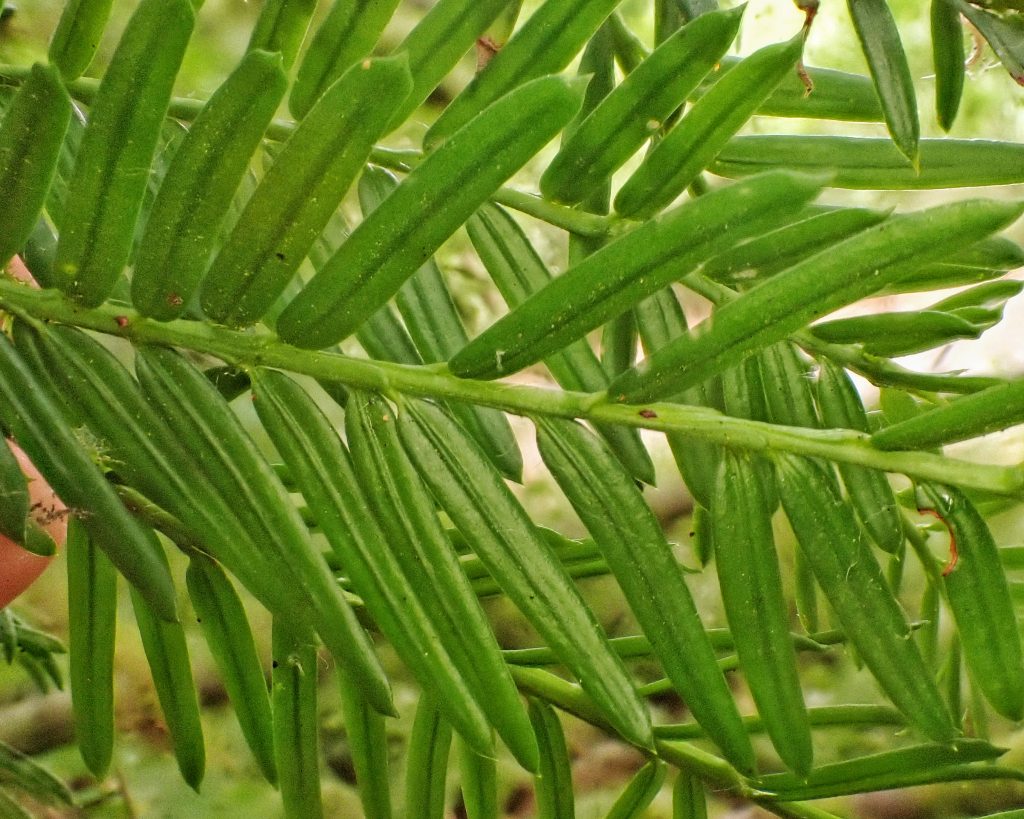
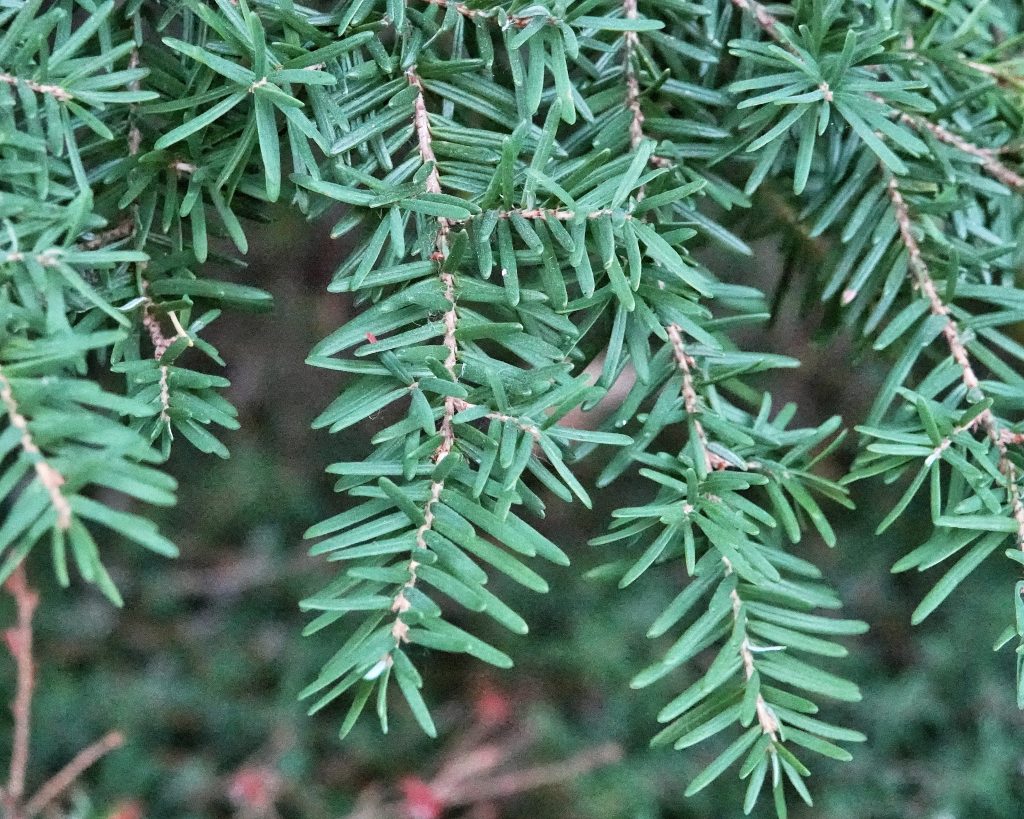
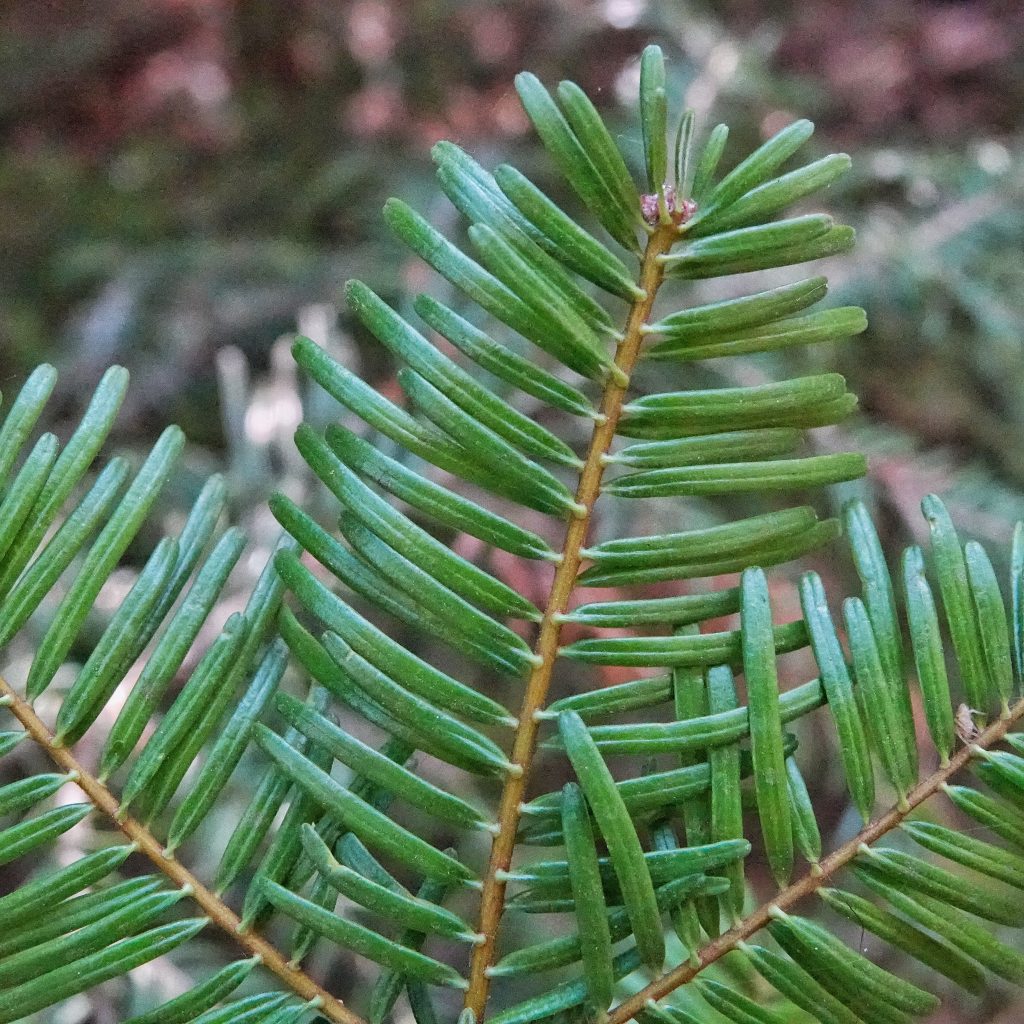
This shade tolerant species is an understory tree in most of its habitats, but in dry, open areas it is more of a shrub growing in low mounds. It has wingless seeds, and relies on consumption of its fleshy cones (arils) by birds and mammals to disperse its seed in their scat. Although I’m not sure how much seed it produces. I’ve found around a dozen trees so far and have yet to find an aril. Because of its thin bark it has a low tolerance for fire. One seldom finds seedlings of other plants beneath Pacific Yew, possibly because allelopathic chemicals in the fallen needles leach into the soil and inhibit their growth.
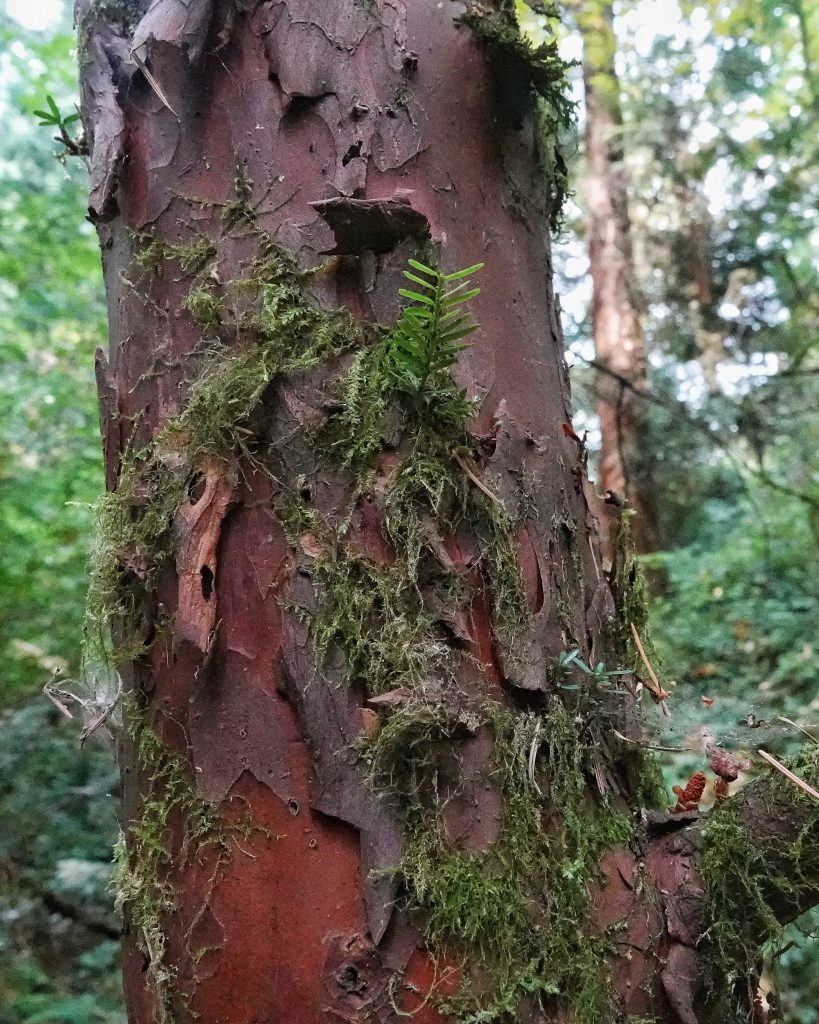
Though a couple tribes ate the berries as food, the practice was not widespread. But many indigenous cultures utilized the bark and needles to treat a variety of illnesses, from stomach aches and other internal ailments, to respiratory and urinary tract infections. However, the primary usages were of its wood. Yew wood in general has been prized for thousands of years, by cultures worldwide, for making hunting bows. It also was worked into paddles, spears, implements and handles for implements, and just about anything else that needed to be durable. For a more complete picture of the many uses indigenous peoples had for this tree, see the 127 entries on the Native American Ethnobotany Database.
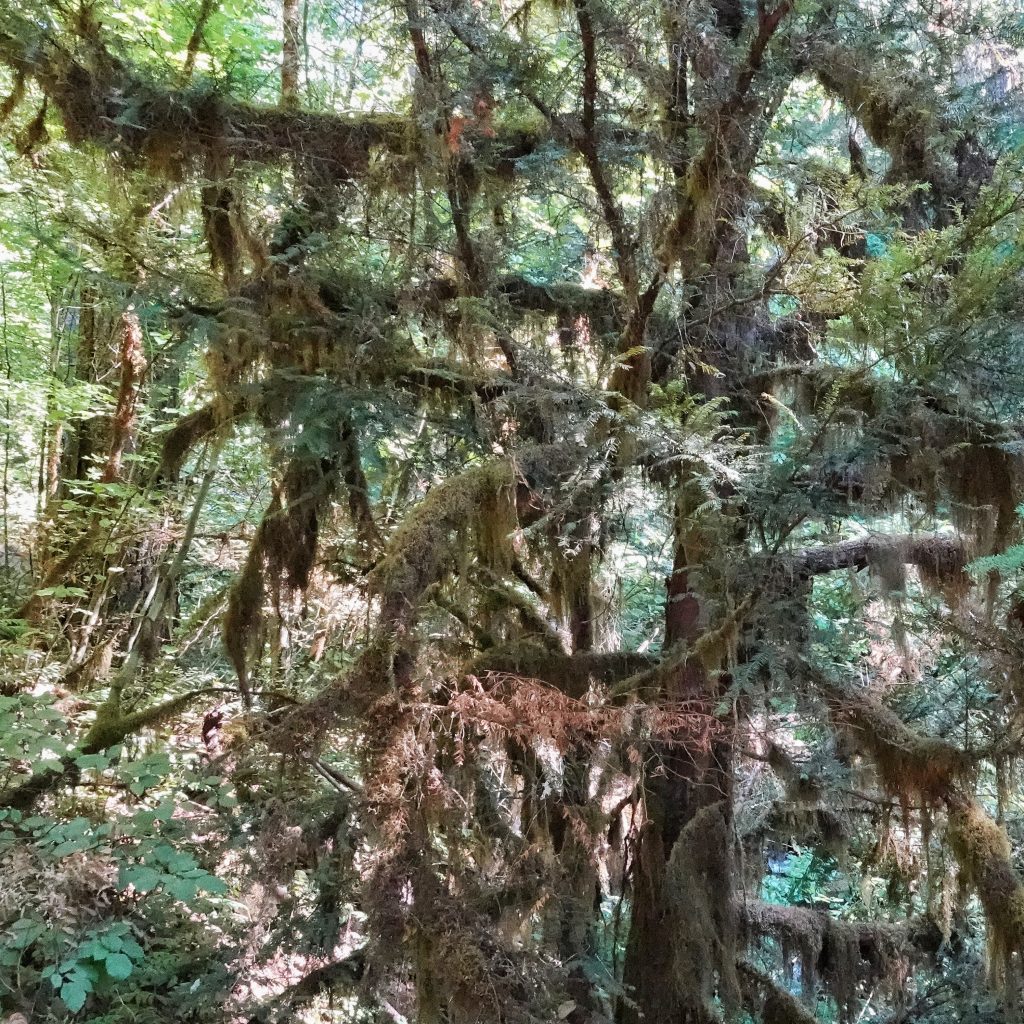
Some indigenous cultures used the bark to treat cancer, and it has been found that the bark contains the highly effective cancer fighting drug taxol, and T. brevifolia has the highest concentration of any yew, a fact which threatened these wonderful trees with excessive harvesting. Synthesizing this compound has proven to be quite complicated, and produces a number of dangerous byproducts, so that it is not economically feasible. However, in the last thirty years, cultivation of various types of yews has been successful, in numbers large enough that twigs and needles, rather than bark, can be harvested to meet the demand for taxol. It has also been found that a precursor to taxol, called 10-DAB, can also be extracted from these stems and needles, and 10-DAB can then be turned into taxol in a more economically feasible process. For a more complete picture of ways in which they are trying to meet the demand for taxol without decimating the Pacific Yew population, see Liu et al.; 2016.
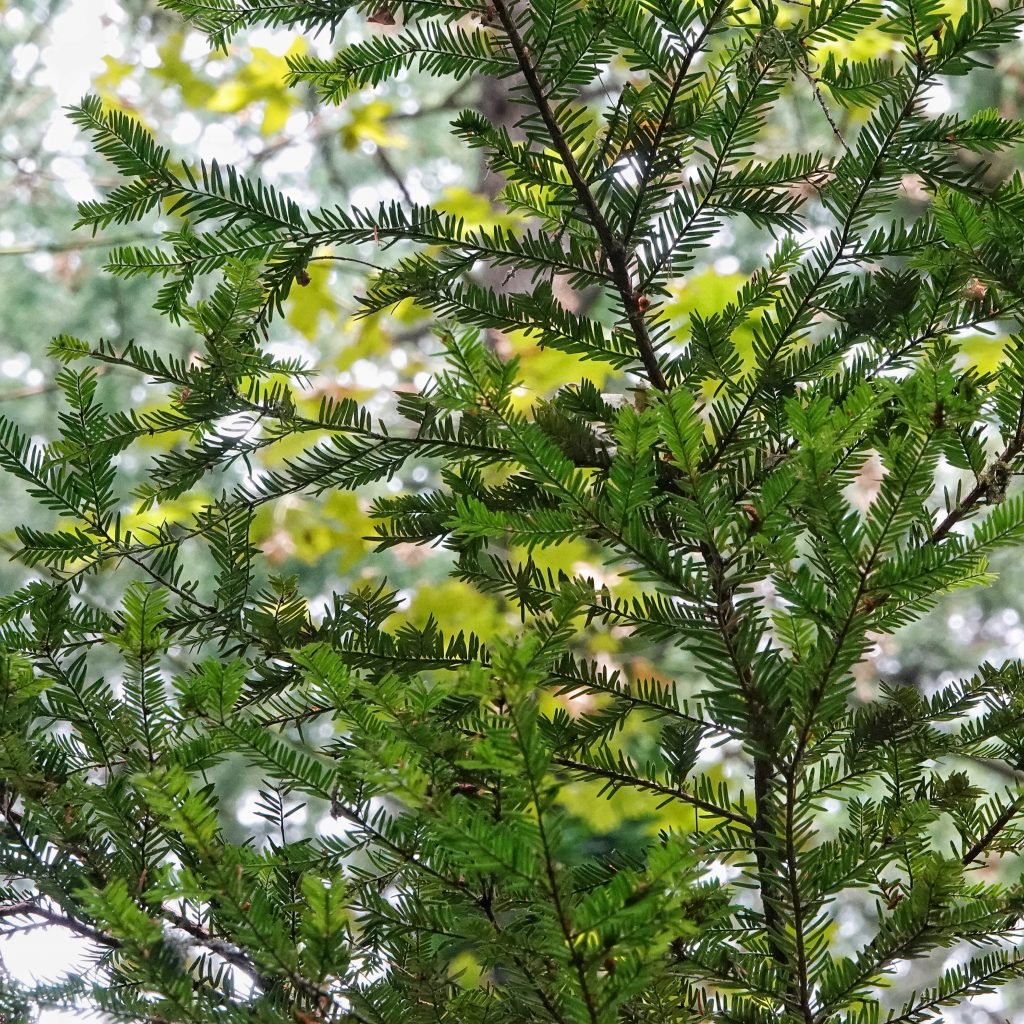
Description– Relatively small (may be up to 60’ tall and 4.5’ wide, but usually under 40’ tall and 2’ wide) tree, with thin, flaky, peeling red to reddish purple bark, and short (less than 25mm), well spaced, apiculate needles that are dark green on top and lighter, dull green below (due to the minute papillae that cover their entire ventral surface); cone (aril) is fleshy and reddish; trees are often leaning, or bent, with somewhat contorted limbs; may be shrub like and low growing in arid or high elevation areas.
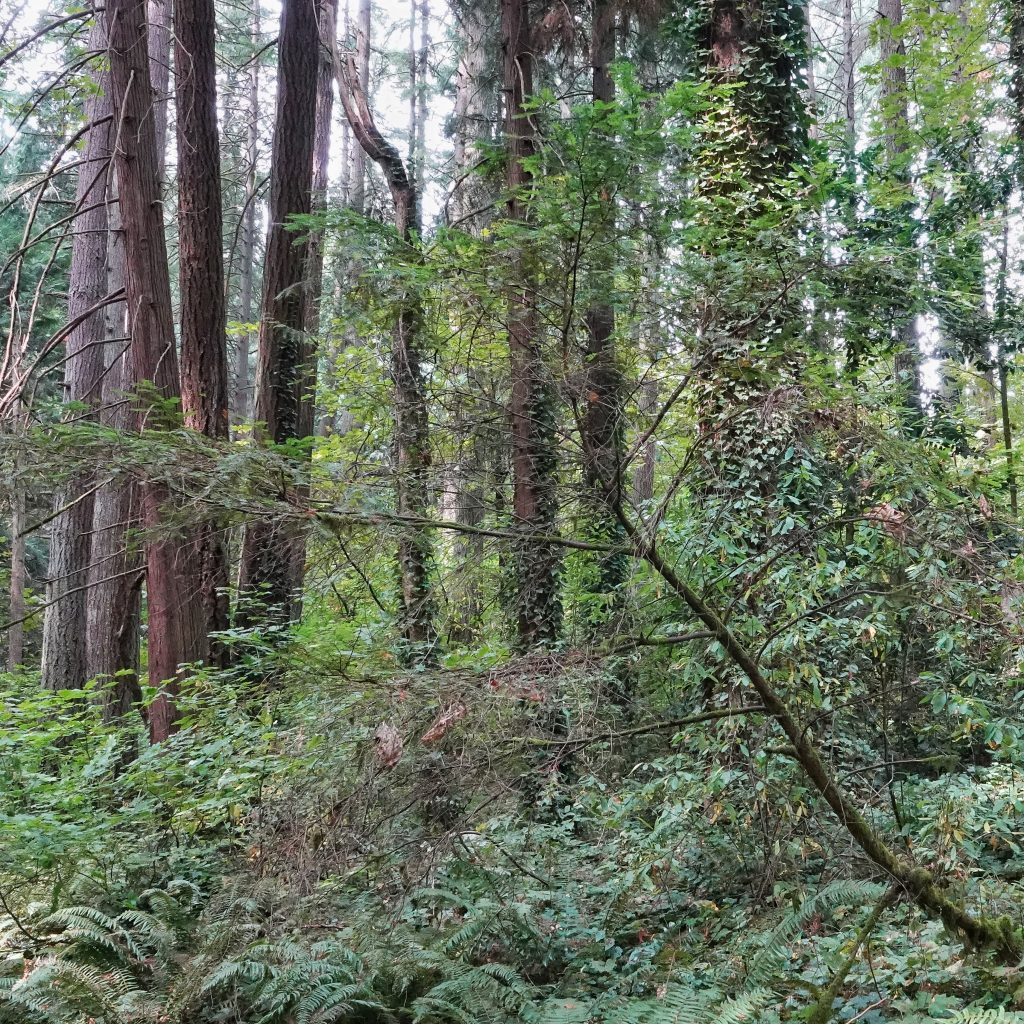
Similar species-The European cultivar Taxus baccata, which can sometimes be found growing wild in and near urban areas, has ventral mid-rib without papillae, giving it a shiny appearance visible to the naked eye; Sequoia sempervirens has stomatal bloom on the underside of the leaf, and only grows wild in sw Oregon/nw California; hemlocks have rounded needle tips and stomatal bloom on the underside of the needles; Grand Fir has blunt to notched needle tip, and ventral stomatal bloom.
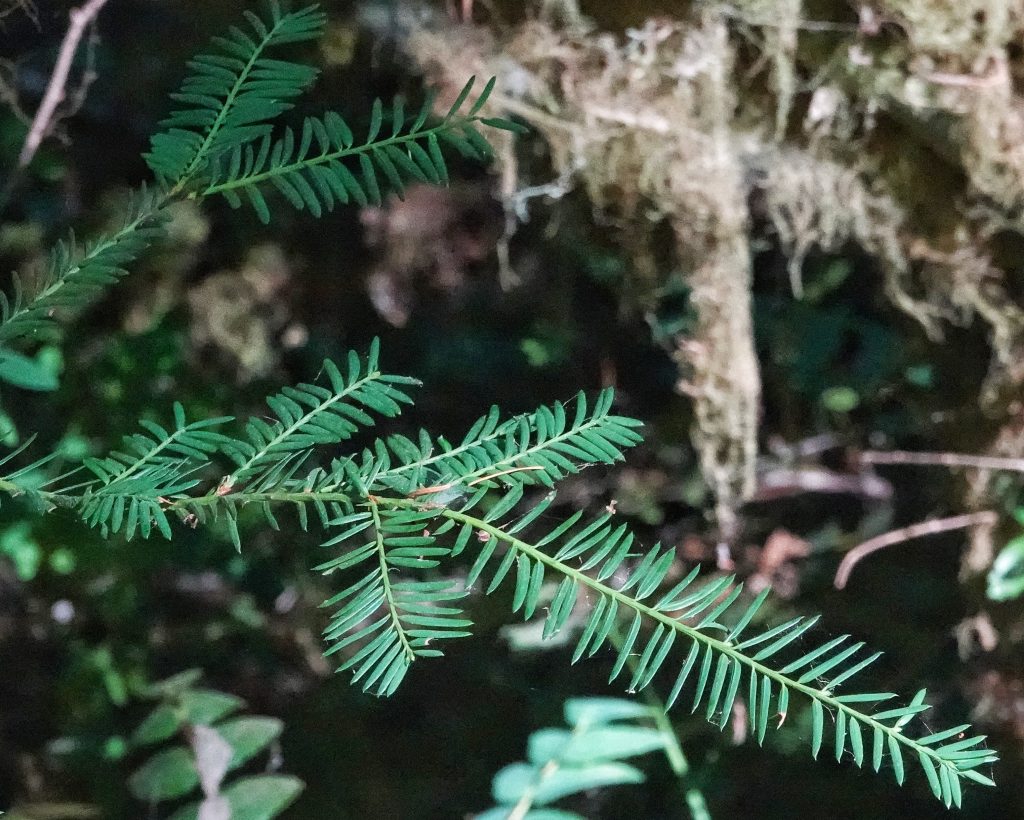
Habitat– Primarily an understory tree in moist to mesic conifer and mixed forests up to subalpine.
Range– Northwestern North America; found primarily from the east slope of the Coast Range to the east slope of the Cascades, in the Siskiyous, and on the west slopes of the Rockies and their attendant spur ranges.
Reproductive timing-Cones form late summer into fall
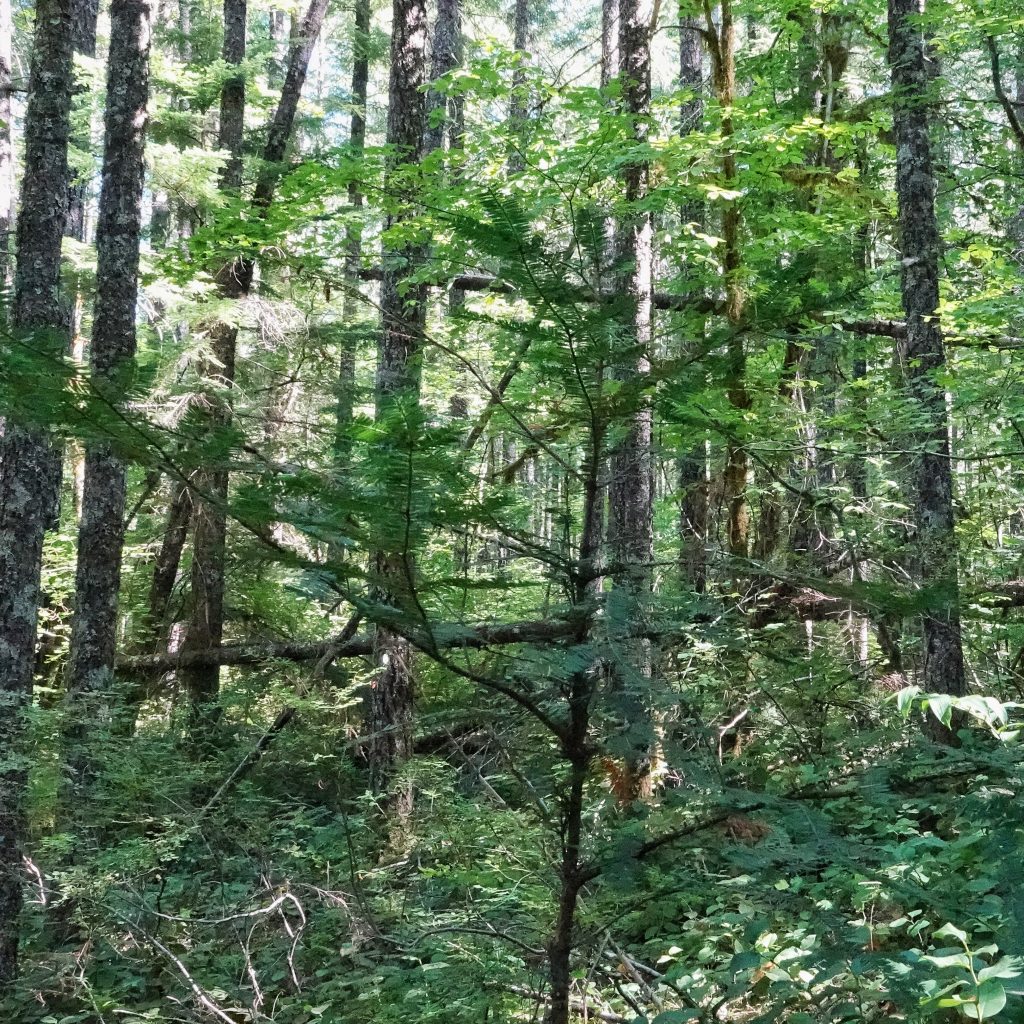
Eaten by– The only insect that I can find that feeds on yews is the Tortricid moth Ditula angustiorana; birds such as Townsend’s Solitaire, Varied Thrush, Hermit Thrush, grouse, jays, Cedar Waxwings, and squirrels eat the fleshy outer surface of the cone and disperse the seed in their scat; deer, elk, and moose browse the foliage, and moose eat the bark as well, sometimes killing trees; said to be toxic to livestock, but this has not been substantiated.
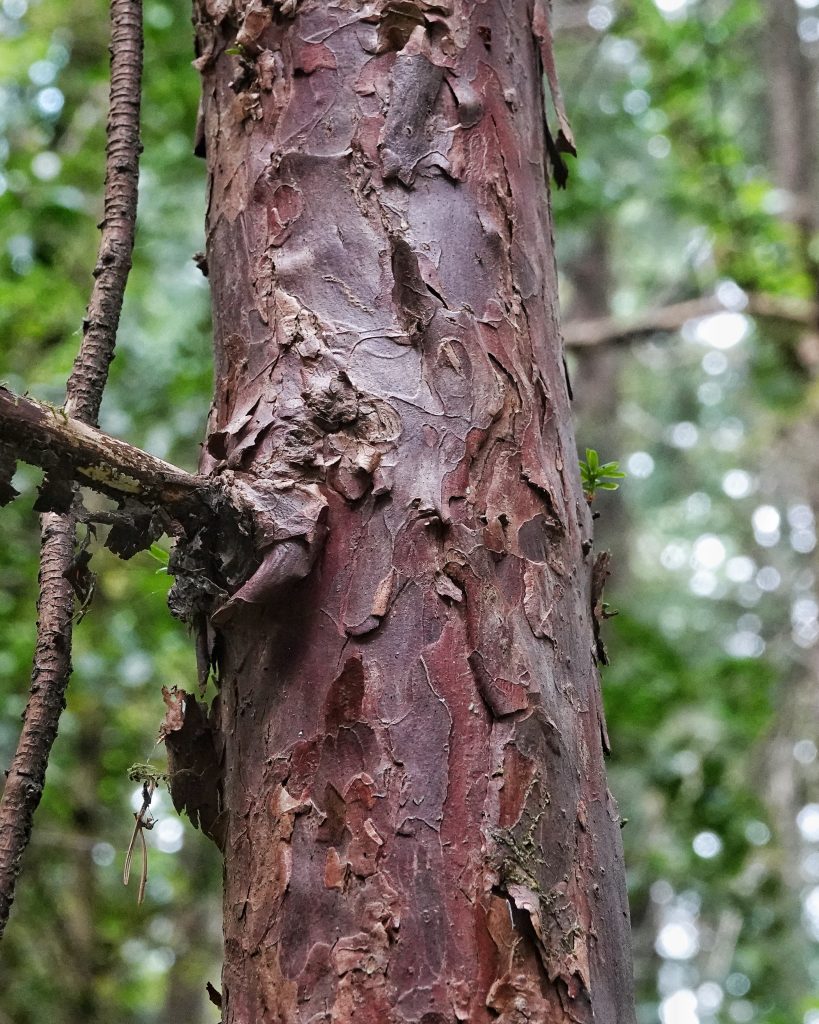
Etymology of names– Taxus is from the Greek word for ‘bow’, referring to the historical use of the branches of this tree for making hunting bows. The specific epithet brevifolia is from the Latin words for ‘short/small’ and ‘leaf’, and refers to the fact that the needles of this tree are smaller than those of most yews. The name ‘yew’ appears to be from an Old English name for ‘red’, referring to the bark of the tree.

Taxus brevifolia (Pacific yew) description
https://andrewsforest.oregonstate.edu/sites/default/files/lter/pubs/pdf/pub2180.pdf
BRIT – Native American Ethnobotany Database
Taxus brevifolia | Landscape Plants | Oregon State University
https://conifersociety.org/conifers/taxus-brevifolia
Burke Herbarium Image Collection
Sci-Hub | Advances in exploring alternative Taxol sources | 10.1039/C6RA06640B
https://www.dropbox.com/s/rxnq0exp12dxrm6/Heiken.1992.Pacific.Yew.%26.Taxol.JELL.%5BOCR%5D.pdf?dl=0
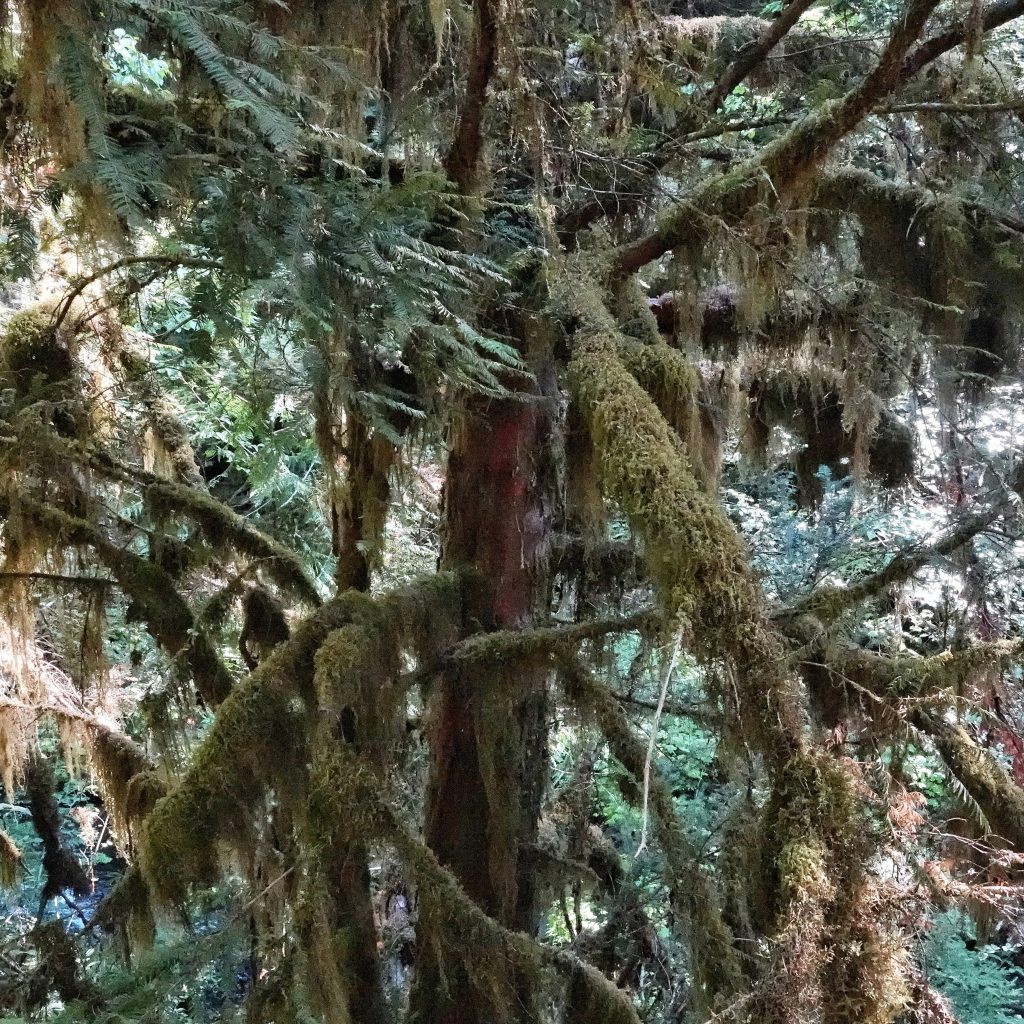
1 thought on “Taxus brevifolia (Pacific Yew)”